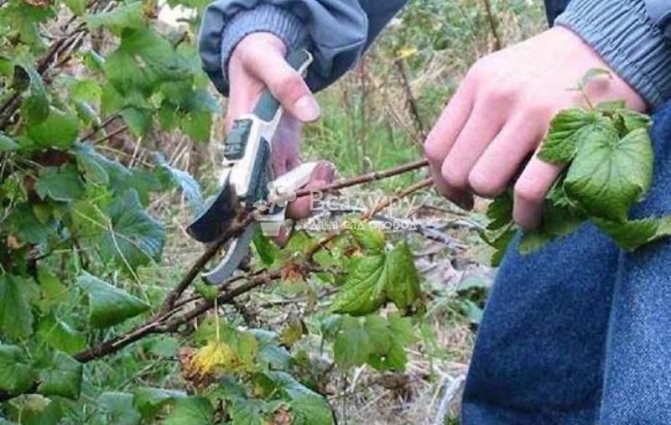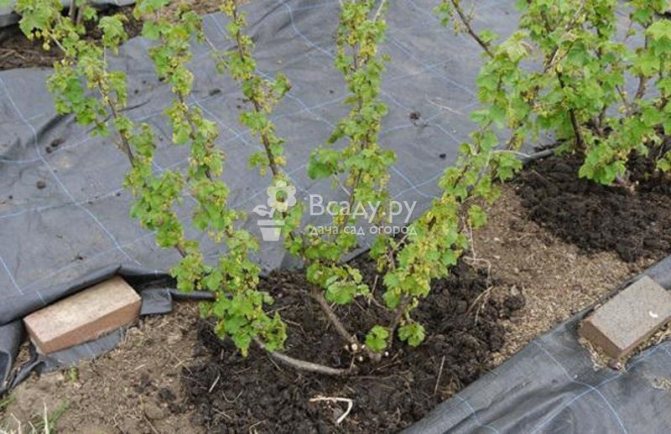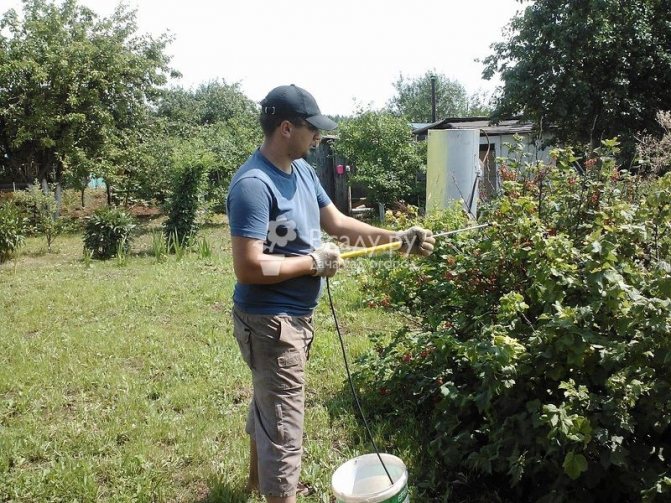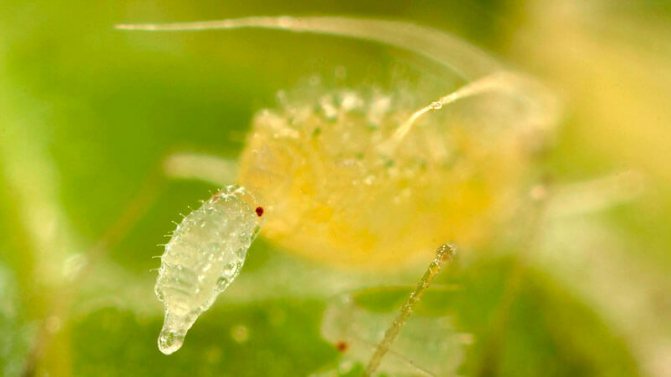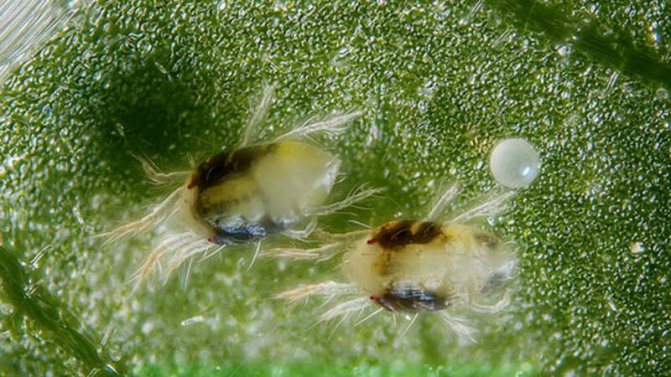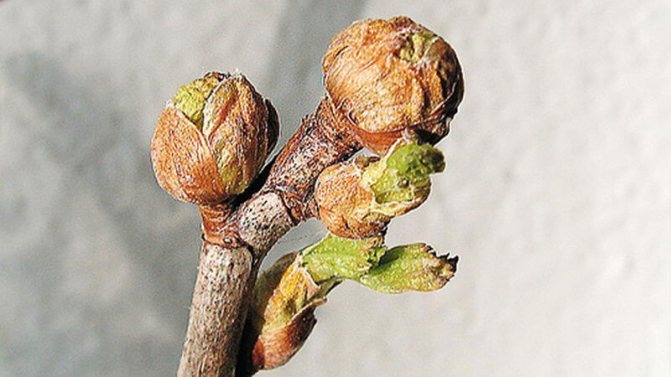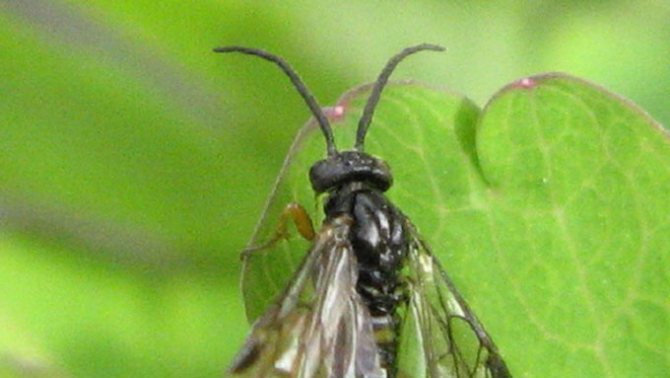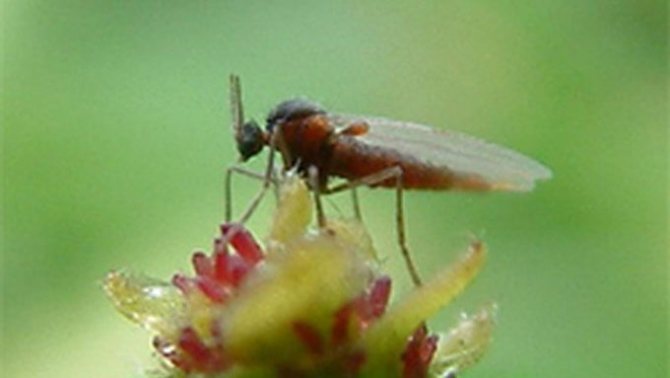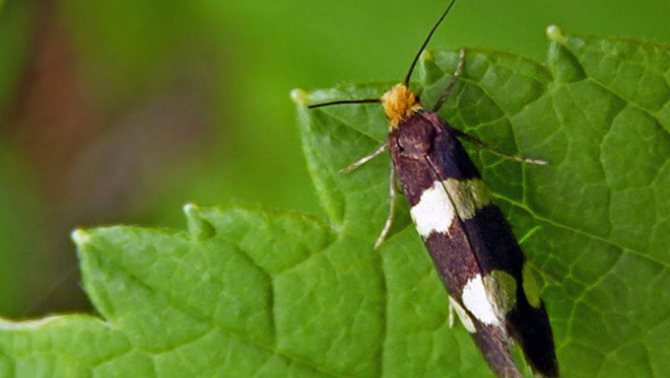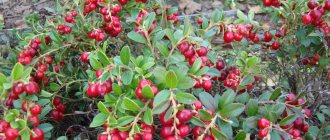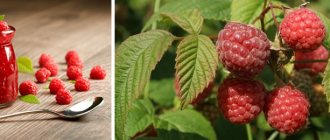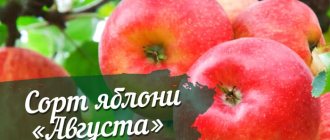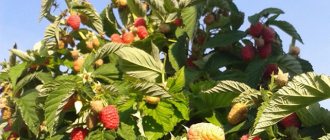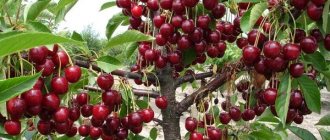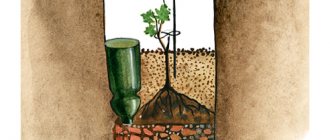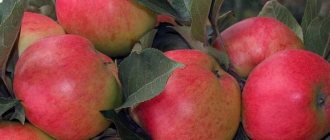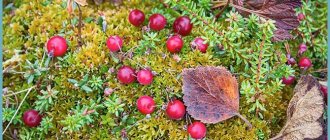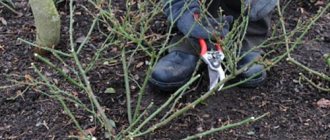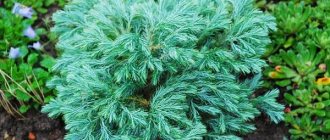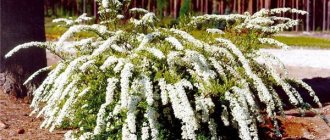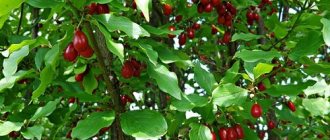The berry is tasty and healthy - black currant. Growing it in the Kuban has its own characteristics, because it is not so easy for us to get a full harvest of black currant. The hot, dry climate of the Krasnodar Territory is the main reason for failure. And many just blame the dry, hot climate of the Krasnodar Territory, varieties, but not themselves. They do not want to understand the reasons for their failures. But even the place of planting of seedlings greatly affects the further fate of black currants. Disease prevention, treatment from pests in the spring before setting the berries, in the summer, in the fall after harvesting - a whole range of measures - everything must be done on time, without delay.
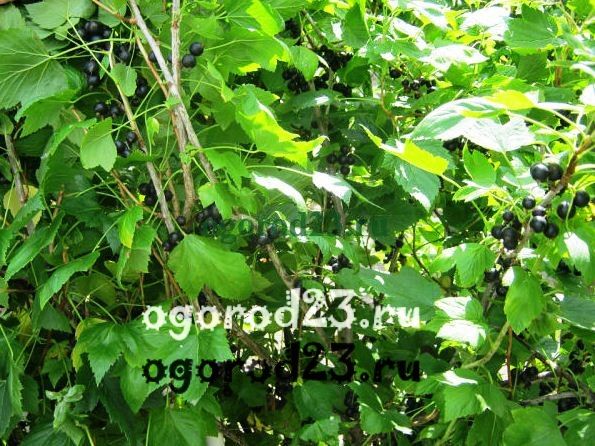
It is believed that black currant lives well, bears fruit in partial shade. Yes, in a hot Kuban summer this is so. But it is very important at what time of day the black currant is closed from direct sunlight. If the bushes are in the shade all day long, then, of course, she will survive there, but will not reveal her potential.
All life on Earth is the children of the Sun! And the lack of sunlight affects the viability of plants, productivity, and the quality of fruits. For some reason, many plant black currants near standing trees, forgetting that the root systems of trees and shrubs will compete for food and moisture. Most often, the victory is behind the trees.
So if you want to have a well-fertile currant, take it in an open, sunny place away from the trees. In addition, keep in mind that trees are suppliers of pests: aphids, ticks, other suckers, as well as diseases.
In our hot, dry summers, the place for currants should be chosen very carefully. The best option, in my opinion, is this. The bushes are open to the sun until noon, then shade. And the sun after 17-18 hours.
And, nevertheless, even a successful arrangement of black currant bushes is not a guarantee of success. I do not consider the issues of planting, laying for future use of mineral, organic fertilizers, they are described many times in many publications. But by what technology to contain black currants, it is necessary to clearly determine in advance.
Varieties of currants
Today, breeders identify about 200 species of currant. Each variety has its own properties and characteristics. Most often, gardeners breed several types of berries.
Black currant
Black currant is the most common and famous. She has fragrant leaves and black berries have a bright taste. The plant is highly resistant to temperature extremes, attacks of pests and diseases, and various climatic conditions. It gives a high yield.
The plant is 1-1.5 m high. Old branches acquire a brown color, while one- and two-year-old shoots retain a green tint. The currant blooms in early summer (May-June), and begins to bear fruit at the end (July-August). Black currant holds the record for vitamin C.
Gardeners breed different varieties: Altai early, Little Prince, Bagheera, Dobrynya, Black Pearl, Otradnaya, Charovnitsa and others.
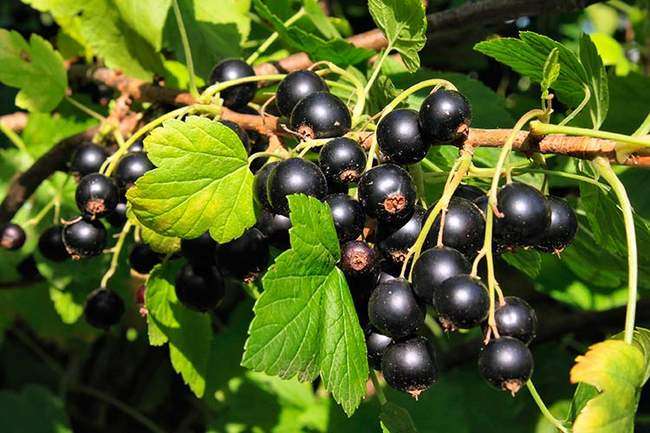

White
It is a red variety without pigmentation. Their description and taste are very similar. There are few varieties of white currant. In the gardens you can find Belaya Potapenko, Smolyaninova, Versailles, Snezhana, etc.
Bushes reach 1.5-2 m in height. The plant is resistant to drought, therefore it does not like abundant watering.Begins to bear fruit in early summer - June. The color of the berries is white with a slight yellowish tinge. And their taste is sweet, a little sour.
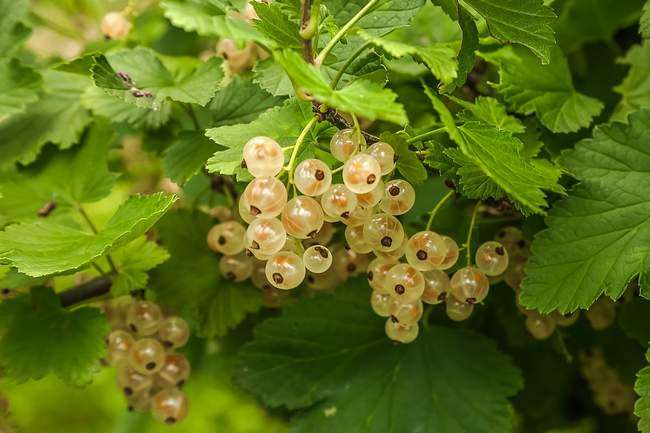

Red
Red currant berries are bright in color. It tastes tender, sweet with a slight sourness. The branches are grayish. In height, it can reach 2 meters. The currant begins to bloom in late spring, and bears fruit in mid-June. The berries grow on long clusters.
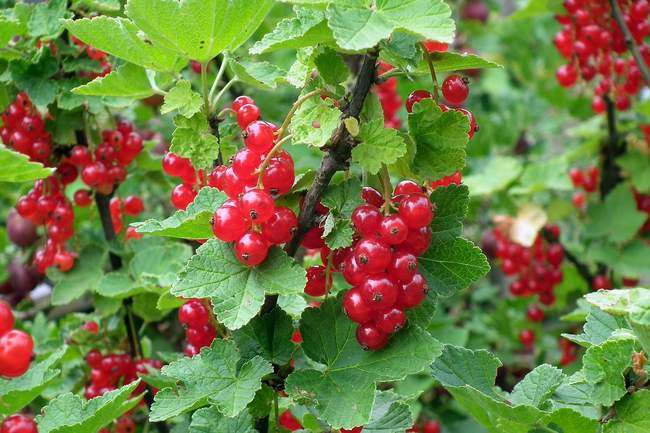

Unusual views
In addition to all the usual types of currants, there are several more exotic ones. Many do not eat because of the too sour taste, but they are used for decorative purposes. Unusual varieties are:
- Icy. It can grow up to 4-5 m in height. It blooms in April-June with red-brown flowers. The berries are reddish and very sour in taste.
- Dikusha. This variety grows in the Far East and Siberia. It gives berries large dark color with a waxy coating. They have a light aroma and sweetish taste. The plant is winter-hardy and resistant to diseases and pests.
- Alpine. The bushes grow compact and neat. It blooms with yellow-green flowers, and the berries turn pinkish. They taste a little starchy. You can meet her in Africa, Europe and the Caucasus.
- Gold or Gold. She received this name for the shade of the leaves, which at the end of summer become purple-yellow. It also blooms with yellow flowers. The taste is pleasant. This type of currant is grown in Canada, Mexico, but is found in Central Russia. Recommended reading - Golden currant: description, cultivation and care.
- Blood red. The fruits of this species have a bluish-black color with a bluish bloom. They ripen at the end of August and are practically tasteless. But the bush is used for decorative purposes. It blooms with beautiful, vibrant colors of red and pink.
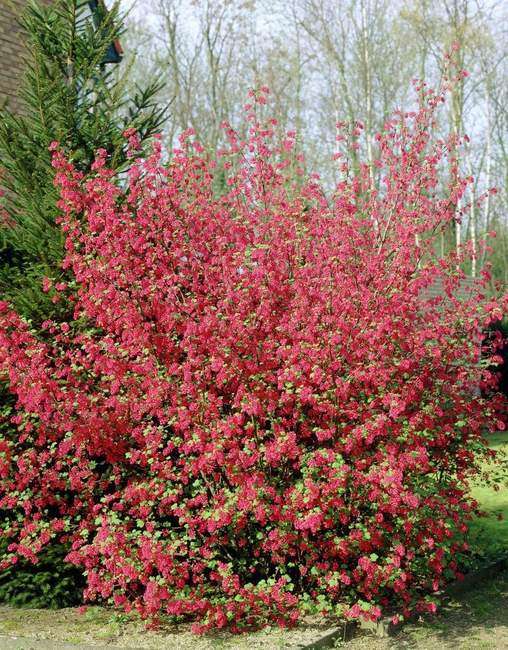

Photo of blood red currant
Application features
Currant leaves are often used both in folk medicine and in cosmetology.
In folk medicine
Traditional healers very often use currant leaves - either as an independent remedy, or as part of herbal preparations. The latter help both for the treatment of a wide variety of diseases. Despite the fact that the moods and decoctions of currant leaves do not have pronounced pharmacological properties and the effect on the body of this remedy is not as pronounced as that of medicines, it is often much more rational to resort to this particular remedy than to pharmaceutical preparations.
Please note: you should not self-medicate even with seemingly safe means like currant leaves! First of all, you need to consult a doctor to clarify the diagnosis and only then use folk remedies to help with the prescribed drugs.
How to grow currants
The plant belongs to unpretentious plants, but in order to get a good harvest and decorativeness, observe the optimal conditions for growing currants. She likes the soils of medium structural, slightly acidic. Do not plant on heavy clayey or near bodies of water, groundwater.
On the site, choose places that are well lit by the sun. She can tolerate shade, but this affects the quality of flowering, growth and fruiting.
Plant currant bushes on a plot of several varieties, as it can be self-fertile. It is advisable to water it regularly, although it tolerates drought well. But this again affects the quality of the crop.
The landing site must meet the following requirements:
- be located away from water bodies;
- protected from frosty winds;
- do not get flooded in the spring.
Over time, the bushes grow. Usually the need for fencing appears after 5 years of cultivation. When fruiting, the branches tend to the ground. This negatively affects the quality of the crop and the health of the plant.Due to contact with wet ground, it begins to hurt and be affected by pests. Tying or a special currant bush holder will help to cope with the situation. Choose it according to the following criteria:
- reliable and durable material;
- environmental friendliness;
- a comfortable shape that does not constrain or restrict the plant.
If you wish, you can make a similar design yourself from scrap materials in the country.
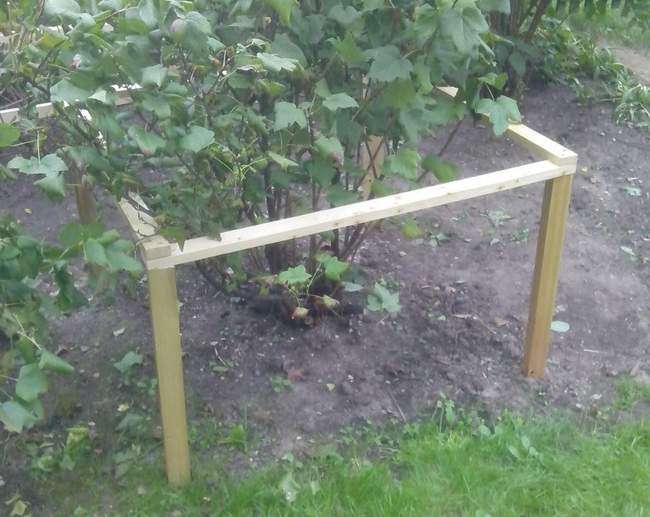

Soil preparation
Currants have special requirements for soils. Chernozem, sandy loam, forest and sod-podzolic are suitable for her. On swampy, heavy, sandy and peaty, it grows poorly.
Currants respond well to fertilizing. Optimum acidity pH 6.0-6.5.
The roots of the plant do not go deep, but are located on the upper tiers up to 40 cm deep. Therefore, carefully dig up the upper part and mix with organic fertilizers. Manure, compost, and humus work well.
Dig holes measuring 40x40 cm. For the lower tier, mix fertilizer and soil from the surface. Peat, humus, superphosphate, ash, potassium sulfate and ground limestone are suitable. Make a top dressing in the proportion: a bucket of compost, 300 g of wood ash, 200 g of superphosphate. Fill in 2/3 of the hole, and use the top of the earth to cover the root system.
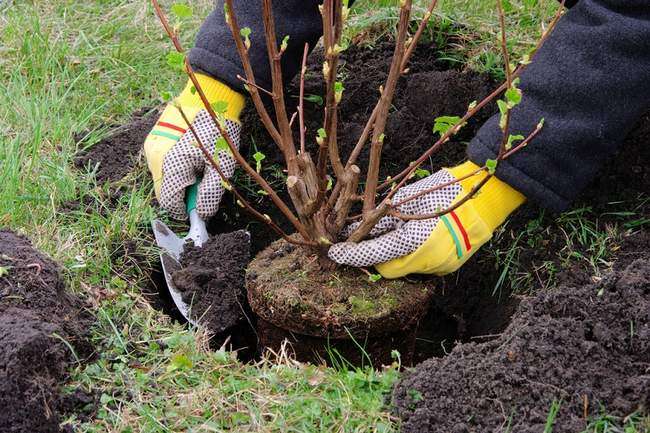

Also consider the features of different types of currants:
- Red and white have longer roots, so plant deeper than 60 cm. She prefers potassium-rich soils.
- Black has a superficial root system. The landing site should be well lit. Water it during fruiting.
Prepare the soil for planting in advance, preferably a year in advance. Remove all harmful weeds and dig it up constantly.
Planting garden currants
Technology, how to plant currants in spring, will help increase the yield and growth of plants:
- Place the seedlings at an angle, this will allow you to get a more developed root system, new shoots from the buds at the root collar.
- When planting, straighten the roots and carefully sprinkle with earth. Compact the soil from above.
- Water liberally after planting. For each bush, at least a bucket of settled water. To keep the soil moist, mulch with peat, humus, straw, sawdust, or dry soil.
- Be sure to prune the bush, leaving only 3-4 strong buds. This is necessary for the rooting and development of roots. Otherwise, the plant will give all its strength to the shoots. Subsequently, this will affect the quality of the crop.
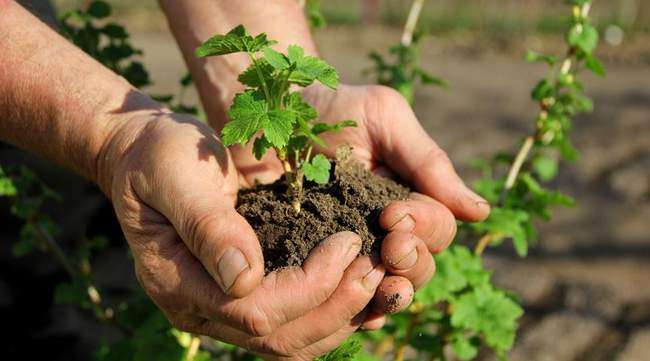

Currant care
Treat currants differently depending on the season. For this, there is a certain procedure.
Spring care
In early spring, immediately after waking up, when the snow has already melted, and the buds have not yet swollen, carry out the following activities:
- Top dressing... Pour special fertilizer for berry bushes with nitrogen under the bushes. Cover the top with earth.
- Pruning... Remove all dry, old, frozen and weak shoots.
- Protection from diseases and pests... Be sure to remove all last year's leaves and grass, pests and their larvae hibernate in them. Inspect the stems for large round buds, it is in them that the parasites laid eggs, or the kidney mite is sleeping. Pour over the bushes with boiling water at a temperature of 80 degrees and spray with special preparations.
- Watering... You need to water the currants 2-3 buckets a week before the berries form, otherwise they may begin to crack. To prevent the top layer from drying out, mulch it with straw, peat, or even newspaper. Plus, it will help prevent pests that have hibernated in the soil. But do not pour directly into the center of the bush, as this will create grooves in which the water will freeze in winter and damage the root system.
How to care for garden currants in summer
Be sure to water and fertilize during the summer months. They are necessary for a good harvest and preservation of the greenery of the bush.Water the currants every two weeks. But it is important to keep an eye on the weather, if the months are dry, then water more often.
Also periodically, once every couple of weeks, feed the bushes with ash or water with a solution of mullein, manure or compost. Spread the fertilizer under the crown of the plant or simply dig it into the soil.
Keep an eye on the condition of branches, leaves and berries all summer. At the first symptoms of illness, take action. If affected branches and leaves appear, cut them off as soon as possible.
Care for currant bushes in autumn
In the fall, after harvesting, remove old and young underdeveloped shoots, which only thicken the bush and reduce productivity. Pinch the tops of green young shoots, so the wood ripens faster, and the risk of powdery mildew is reduced.


How to properly cut currants, read here.
In the fall, carry out a thorough fertilizing with potash and phosphorus fertilizers. Both ready-made preparations and self-prepared products are suitable. When the plant has shed most of the leaves, sprinkle the soil with wood ash and compost.
At the end of autumn, cut out all damaged and old branches, remove swollen buds, since a kidney mite has settled in them.
In the fall, start preparing planting material. This is the right time to grow currant bushes.
When to start gardening
Currant bush in spring.
Caring for black currants should begin with the arrival of the calendar spring, before the buds swell and bloom. During this period, the plant is less sensitive to injuries, which cannot be avoided during the pruning process. It is also advisable to carry out other activities before the start of sap flow. What you should pay attention to when choosing the timing of the start of work on spring care:
- A stable above zero temperature should be established in the region of +4 degrees.
- Work begins as soon as the last snow melts near the trunk circle and the surface layer of the earth thaws a couple of centimeters.
- No signs of swelling and budding. If the leaves have blossomed, then you are late with spring care.
Approximate terms by region:
- On South start caring for currant bushes in mid-March. During this period, the earth will warm up to the desired value and dry out a little.
- In outskirts of Moscow (in the Middle Strip) winter gives way to spring a little later than in the south. They begin work in the garden in the second half of April.
- In Siberia and the Urals it is necessary to start pruning and other activities from the end of April to the beginning of May. The first leaves usually bloom in mid-May.
Top dressing
Timely feeding increases the immunity of the plant. Conduct it as follows:
- In the spring, after the currant wakes up, apply nitrogen fertilizers. For young plants, 30-40 g of urea will be enough. After four years, cut back to 20-30 grams per shrub.
- During the summer, bury ash, compost and manure under the bush. Water with a solution of water and natural organic fertilizers.
- In the autumn months, fertilize each plant with 4-5 kg of compost, droppings or manure, 10-15 g of potassium sulfate and 50 g of superphosphate. This is the main food for garden currants, containing all the necessary substances.
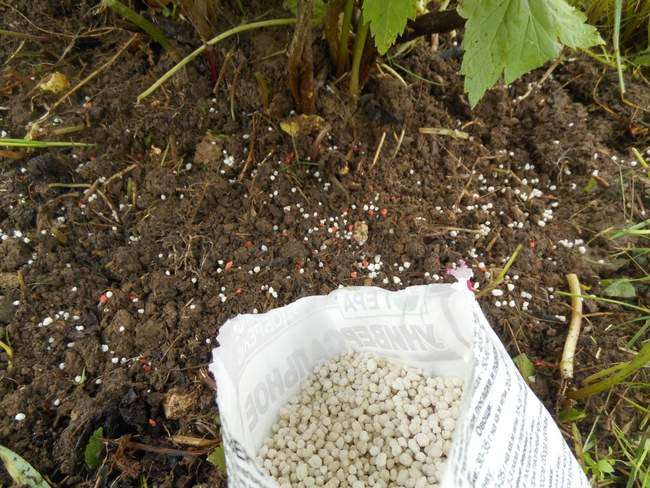

Apply liquid fertilizing 4 times a year:
- during kidney swelling and growth;
- when flowering to increase yields;
- at the beginning of summer when the berries are ripe;
- The 4th ensures the fruiting of the plant for the next year. It is carried out after the harvest at the end of summer.
Liquid dressings for currants include a solution of chicken manure (in a ratio of 1 to 10) or mullein, manure (in a ratio of 1 to 4). Also apply mineral fertilizers based on phosphorus (20 g) and potassium (10 g) per 10 liters of water.
Diseases and pests: prevention and treatment
Preventive measures against diseases and parasitic insects in autumn and spring include harvesting fallen leaves and grass, digging up the soil. It is from there that the main pests come.
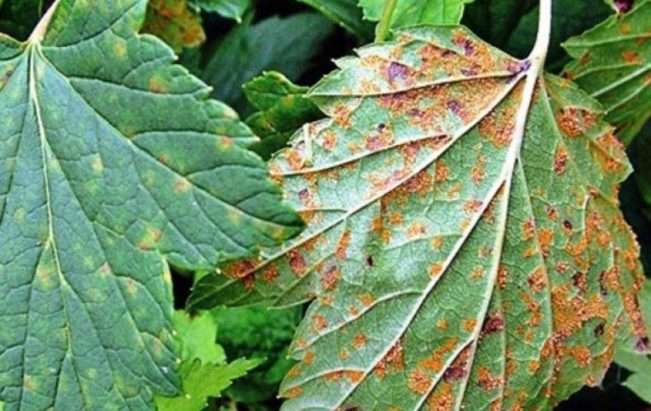

Currant suffers from:
- Powdery mildew.For prevention and treatment, spray the plant with a solution of ferrous sulfate, soda ash, laundry soap 3 times every 10 days.
- Anthracnose. Treat fungal infections with Bordeaux liquid solution. Burn the affected shoots.
- Septoria. Spray Bordeaux liquid as a treatment and prophylaxis.
- Terry. There is no cure for this viral disease. Conduct prophylaxis by spraying with Fitoverm, Akarin or Aktellik.
- Goblet rust. Treat the disease by spraying Bordeaux liquid with a solution, as well as Fitoverm, Akarin or Aktellik.
A measure of prevention of all diseases is the timely pruning of affected branches and their burning.
Currant bushes are attacked by the following pests:
- Kidney tick. Its danger is that it is invisible and tolerates terry.
- Spider mite. A decoction of onion peel or tincture of tobacco helps to get rid of it.
- Aphids. You can get rid of it after you remove the ants from the site.
- Glass-makers.
- Gall midges.
- Berry sawfly.
To prevent infestation by parasites, dig up the soil under the bush, remove leaves and grass. Of the chemicals, karbofos, chlorophos are effective.
How to correctly recognize diseases and pests, as well as how and how to process currants in order to get rid of "enemies", we read in this article.
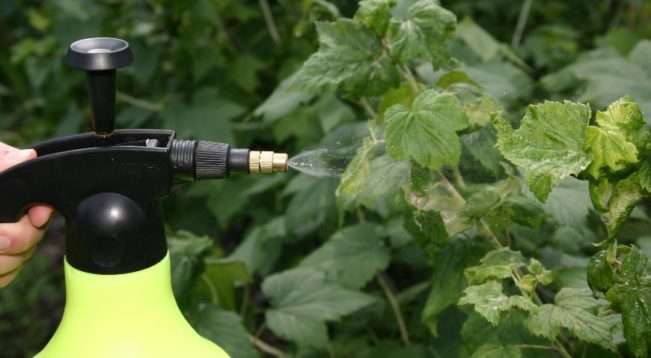

Video: All summer we drink tea with currant leaves
Decoctions of currant leaves are absorbed into the blood more slowly than infusions. They are meant for
recovery of the body after a serious illness or surgery;
- strengthening immunity;
- improving the activity of the nervous system;
- treatment of pyelonephritis, cystitis, urolithiasis, diabetes mellitus.
- Infusions act faster and the effect of their application is visible almost immediately. These funds:
- strengthen the immune system;
- eliminate depression;
- relieve chronic cough;
- increase the body's resistance;
- relieve symptoms of gout;
- are an excellent remedy for arthritis;
- used as a diuretic;
- relieve swelling;
- reduce blood pressure.
Before using a decoction or infusion of currant leaves, be sure to consult with your doctor.
Propagation of currants by cuttings, layering, dividing the bush
Periodic reproduction of currants prevents the degeneration and aging of plants. In addition, you can cultivate the berry yourself and improve its quality.
To plant red and black currants, several methods are used: cuttings, layering or division.
Cuttings
This method is considered to be the simplest. Choose 2-3 year old branches that are not yet completely woody. They should be healthy and with large, sweet berries. Root the branches.
Cut the cuttings into 15-20 cm, leave 3-4 healthy buds on each. Make slices 1-1.5 cm higher from the kidneys. Use sharp and disinfected instruments. To make the roots grow faster and stronger, soak the cuttings in Kornevin for 12 hours.
Plant your seedlings in the spring or fall on a level, draft-free area in your garden. For planting, dig a trench and place the cuttings at an angle of 50-60 degrees at a distance of 70-80 cm from each other. Then compact the soil, mulch with non-woven material or fertilizer 3-4 cm. Do not allow the earth to dry out, for this dig up and loosen it.
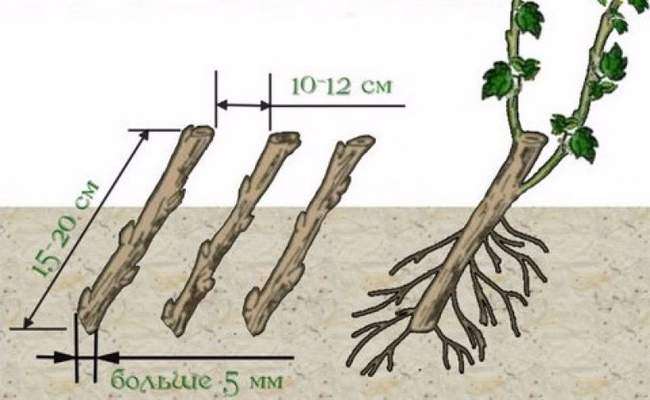

Have you decided to propagate the currants by cuttings? Find out how to do it right. More details.
Lead
In this case, the lateral branches are rooted, and they are separated after the formation of a new bush. To do this, use two-year-old shoots. Before rooting, thoroughly loosen the soil, apply fertilizer and water the soil. Propagated by layering in two ways:
Horizontally
Lateral young shoots are bent to the ground, held and covered with earth. After some time, they give rise to roots and shoots. Dig them out after they are fully rooted to transplant to a more open area.
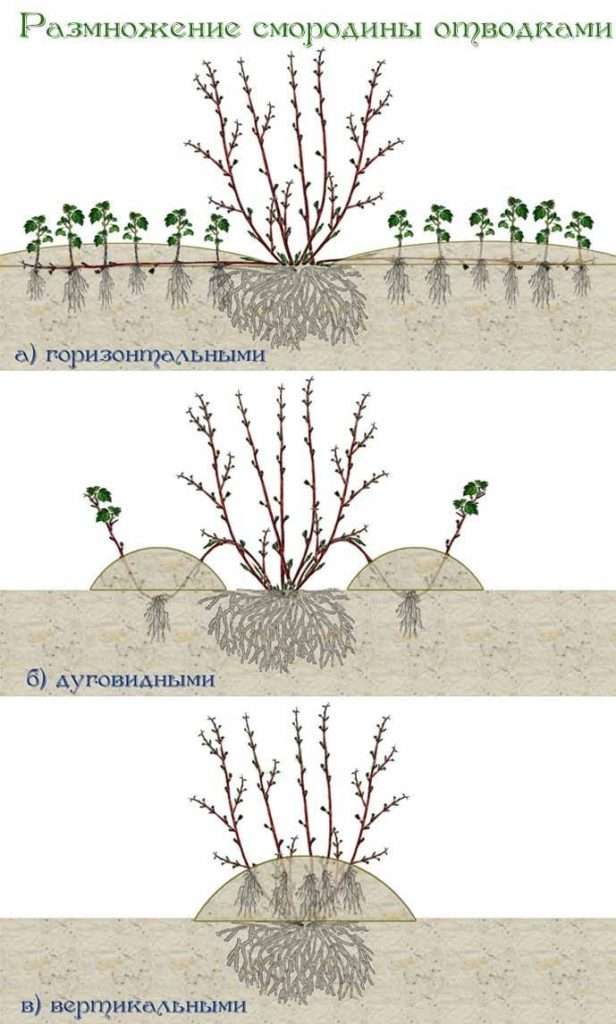

To enlarge the picture, click on it
Vertically
In young seedlings, almost all shoots are cut off, the rest of the bush is sprinkled with earth. New branches grow from the lower lateral buds. In the fall, the rooted seedlings are transplanted to an independent place.
Division
The advantage of this method is that planting is faster, no rooting techniques are needed. No preparation required. But the survival rate in this case is much less than by cuttings or layering.
Divide bushes with a saw or pruning shears. Each plant should have strong and viable roots.
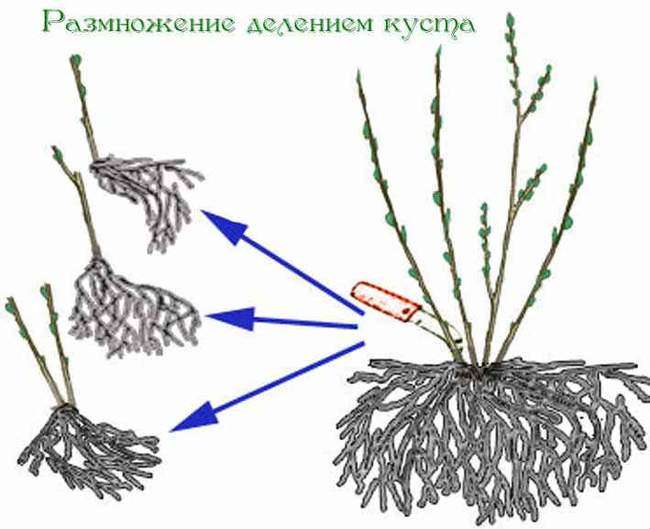

Traditional medicine recipes
Traditional healers use currant leaves in a slightly different way than we are used to - ordinary users - and will certainly supplement them with various components to enhance the beneficial properties.
Flu
Currant leaf with viburnum and raspberry is an excellent antipyretic and diaphoretic agent used for influenza and ARVI. To prepare the broth, put 2 grams of currant leaves, 25 grams of viburnum berries and 10 grams of raspberries in a large mug, pour 300 grams of boiling water, cover tightly and let it brew for 15-20 minutes. Drink warm, unsweetened or with a little honey, 3-4 times a day until noticeable improvement.
With a strong cough
For a strong cough caused by a viral infection, collecting from blackcurrant leaves, oak bark, sage, elder flowers and forest mallow, taken in equal parts, helps. A tablespoon of crushed raw materials is poured with 250 grams of boiling water, insisted for at least an hour, after which it is filtered and used as a rinse.
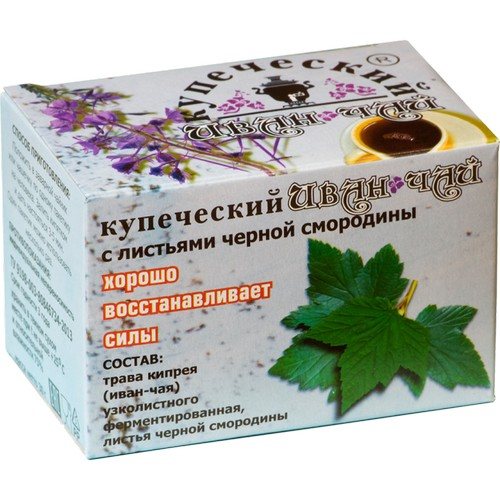

For blood purification (for skin diseases)
For various skin diseases, it is useful to ingest and use a decoction of medicinal plants as lotions. For its preparation, take a blackcurrant leaf, a string, yarrow and white ashberry (in two parts), a strawberry leaf and burdock root (three parts each), a tricolor violet (four parts) and walnut leaves (one part).
All components are mixed in a glass jar. Taking a tablespoon of the mixture, pour it with a liter of boiling water, simmer for 10 minutes over low heat, and then insist for about an hour. The broth prepared in this way is filtered and taken in a tablespoon 5 times a day, an hour after a meal.
With arthritis
For pain in the joints, such a healing drink is used: tea is made from lingonberry and currant leaves and drunk 15-20 before breakfast and dinner.
Diuretic
A decoction of blackcurrant leaves also helps from the excess of uric acid in the body, this time in its pure form. 100 grams of raw materials are poured with 2 liters of boiling water, insisted for 8-12 hours and taken 1/2 cup an hour after breakfast, lunch and dinner (and at least two hours before going to bed!).
Preparing currants for winter
The currant is frost-hardy, but it needs special preparation for the winter in order to preserve all the branches. So that they are closer to the ground, do not suffer from frost and drafts, and are under the snow, bend the shoots closer to the soil. Several ways will work:
- With tiles and bricks. Direct the branches into the grooves and press them to the ground with bricks. But metallic materials cannot be used, as they will take heat away from the plant.
- Dig in with earth. The method is similar to the warming of grapes. This helps the plant to survive frosts down to - 35-40 degrees.
- Wrap up in insulation. But use only non-woven fabric and mineral wool. You cannot use polyethylene, as the branches must breathe. Wrap each branch. Currants are not afraid of frosts up to -50 degrees.
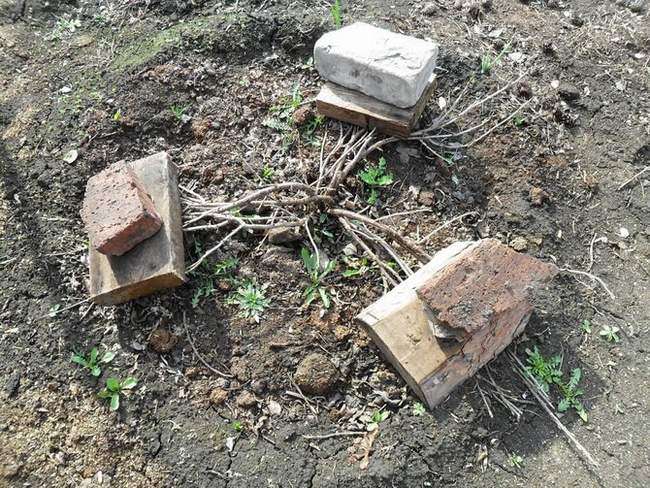

Before wintering, be sure to dig up and loosen the ground under the bush and then sprinkle it.Loosening will help get rid of some of the pests.
Useful properties of leaves
Black currant leaves have powerful medicinal properties - in particular:
- anti-inflammatory;
- antiviral;
- antibacterial;
- antiseptic;
- antineoplastic.
It is interesting to note that dried currant leaves fully retain the properties that are inherent in fresh ones. Thanks to this, they can be dried for the winter and consumed until the summer.
What is the benefit of a currant leaf?
For men
For males, currant leaves:
- improve the functioning of the urinary system;
- stabilize the reproductive system;
- prevents diseases of the cardiovascular system.
For women
In the body of women, decoctions of currant leaves:
- regulate metabolism;
- contribute to the general rejuvenation of the body;
- supply the body with folic acid.
For pregnant women, it is not only possible, but also necessary to use decoctions and infusions of currant leaves, since they reduce the risk of developing pathologies in the fetus.
For kids
For children, currant leaves are especially useful because they:
- improve brain activity;
- speed up metabolism;
- strengthen the immune system;
- make bones stronger.

